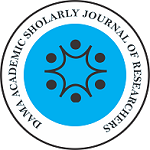Authors: Deasy Afrieani1
1Institute of Health Science “Budiluhur” Cimahi, Indonesia
Abstract
This descriptive-correlational study was conducted to determine the mothers’ practices in caring for children with acute respiratory infection in a selected village in Cangkuang, Bandung Regency, West Java, Indonesia towards development of a community health education program. The participants in this study were 83 mothers of children with acute respiratory tract infections who were currently residing in Cangkuang Village, District Dayeuhkolot – Bandung Regency. They were selected using convenient sampling technique. The instrument used to gather data was a validated survey questionnaire. The study was conducted on December 2013 to January 2014. The data collected were subjected to statistical treatments using descriptive statistics such as frequency and percentage distribution, weighted mean using a 5- point Likert scale and inferential statistics such as Pearson and Chi square for hypothesis testing. The results of Chi square and Pearson tests revealed that the participants’ age, family income, educational attainment and number of family member were not significantly correlated to the mothers’ practices; however, the number of family member was found out to have a significant relationship to the mothers’ practices in terms of personal hygiene only. The study concluded that age, educational attainment, family income and number of family member do not determine the capabilities of mothers in their caring practices but family density does affect how the mothers enforce on their children the practice of personal hygiene. The findings of the study form the basis of developing a community health education program for the residents of selected village under study. In this regard, an intensive information dissemination campaign program through a series of seminar- workshops in collaboration with the village officials and public health nurses in order to improve the mothers’ practices in the areas of personal hygiene, environmental sanitation and treatment is recommended.
Keywords: Acute respiratory tract infection, Children, Mother’s practice in caring

